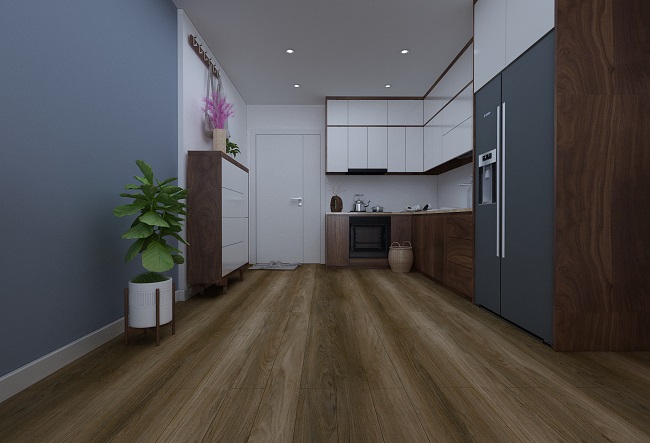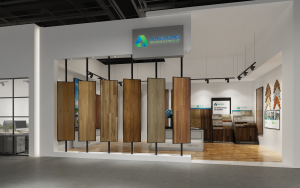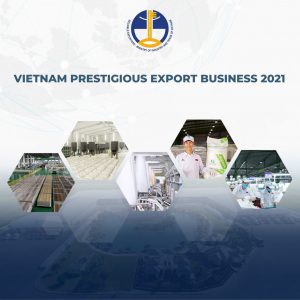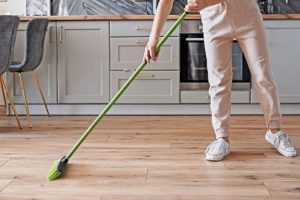Areas of the home that are damp, moist, or outright wet pose challenges for flooring, since so many flooring materials are susceptible to mold, rot, or mechanical breakdown of the materials when they are subjected to moisture.
Organic vs. Inorganic Materials
As a general rule, floor coverings made from inorganic materials, such as synthetic plastics, will be better than floorings that contain organic materials. The term organic technically refers to any material that is carbon-based and was once living, but when used to describe flooring materials, it usually refers to plant-based materials, such as solid hardwood, engineered wood, or bamboo, which is actually a grass. When subjected to moisture, organic materials will quickly begin to decompose, and they can soon become a host for a variety of molds and bacteria. Most inorganic materials, on the other hand, are products made from synthetically refined chemicals, and they are largely immune to the effects of moisture.
Not all flooring materials are fully organic or inorganic, of course, and the ratio of organics to inorganics will affect their ability to handle moisture. Plastic laminate flooring has a synthetic surface that is fully 100 percent inorganic, but the thicker base layer on the flooring is usually fiberboard, made from wood fibers. Laminate flooring, therefore, is usually a poor choice for damp locations. Bamboo, on the other hand, is a fully organic material, but because bamboo flooring is made from a large ratio of synthetic resins and glues, it is actually relatively good at handling moisture when compared to inorganic plastic laminate flooring.
One exception to the rule is carpeting. Except for relatively rare wool and cotton carpet blends, most carpeting is synthetic and fully inorganic. But because carpeting traps and holds moisture, it is a very poor choice for damp locations.
Good Flooring Coverings for Damp/Wet Locations
All the floor coverings in this category provide excellent protection against moisture. All of the materials themselves are 100 percent waterproof. These flooring coverings can be used with confidence in kitchens, bathrooms, and basements.

- Porcelain tile: Porcelain tile is a form of ceramic tile often used in showers, bathtubs, pools, and other pure-water areas. This material is highly resistant to intense water, thanks to the very fine clays and high firing temperatures used in its creation. Porcelain tile has a water absorption rate of 0.5 percent or less, as defined by American Society for Testing and Materials (ASTM) C373. Porcelain tile is arguably the very best material for chronically damp locations, provided the grouted seams are maintained adequately. Cracked grout seams can provide an avenue for moisture to seep down into the subfloor.
- Ceramic tile: As with porcelain, ordinary ceramic tile is an excellent choice in areas that see puddling or standing water. The only difference is that non-porcelain ceramic tile has a slightly higher water absorption rate, though this is typically not an issue. As with porcelain, the weak point of ceramic tile is not the tile itself, but the grouted seams between the tiles.
- Vinyl SPC Flooring: Sheet vinyl is a 100 percent waterproof solid surface. Luxury vinyl SPC flooring comes long plank strips, typically 7 inches wide and 48 inches long. The lock-and-fold style of joinery provides a fairly tight seal against water. The entire layer of flooring is entirely waterproof, including the core, making this a much better flooring for wet areas than plastic laminate flooring.
Concrete: Properly sealed concrete is excellent against water. Once rare except for utility areas, concrete is gaining in popularity for living areas thanks to new options for colorizing and texturizing it.









